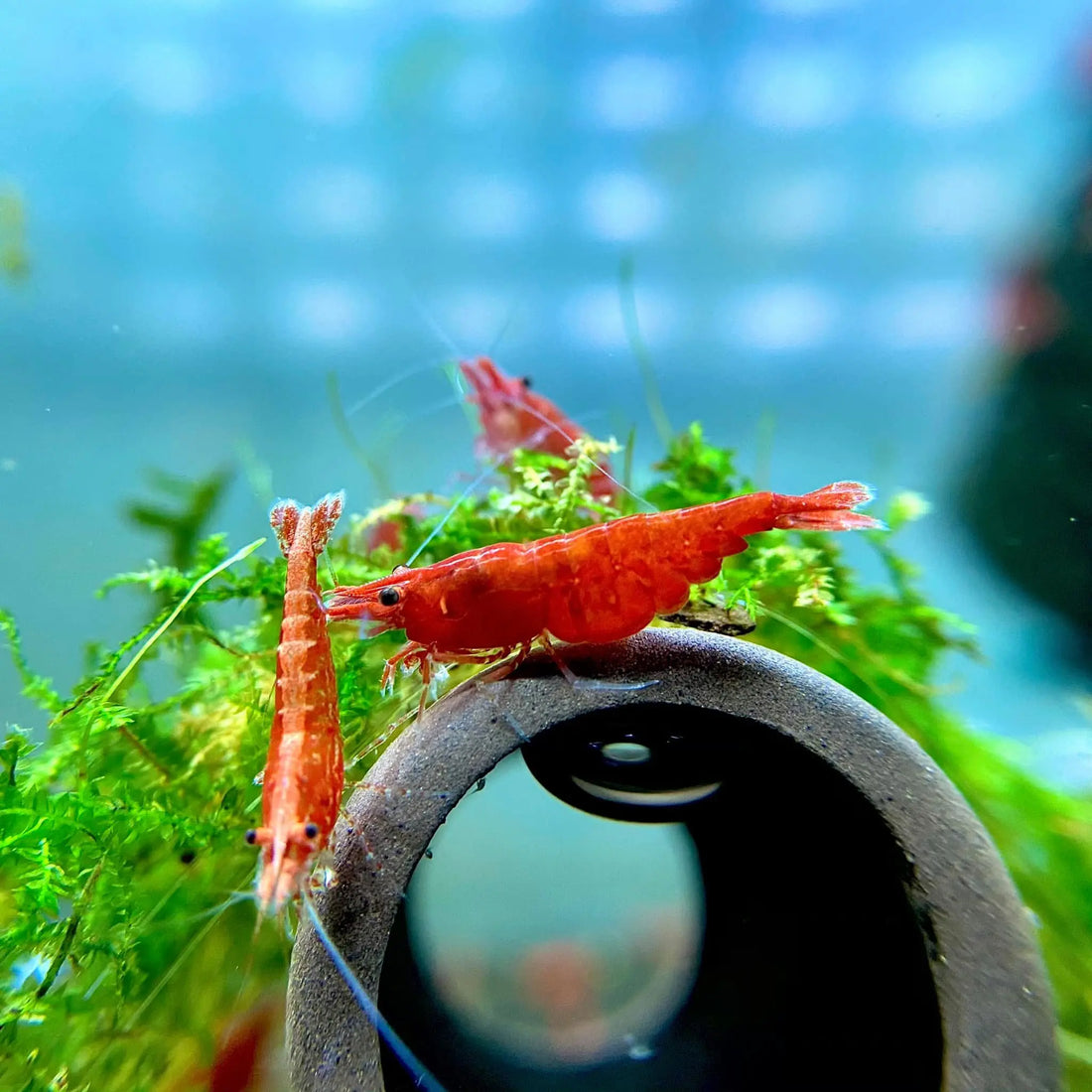
Best Temperature Range for Healthy Cherry Shrimp
Share
Cherry shrimp (Neocaridina davidi) thrive in specific conditions that mimic their natural habitat. Maintaining the correct temperature is crucial for their health, breeding, and overall well-being. Here's a more detailed overview of the best temperature and related environmental conditions for cherry shrimp:
Optimal Temperature Range
- Ideal Temperature: 72°F to 78°F (22°C to 26°C)
- Acceptable Range: 65°F to 80°F (18°C to 27°C)
- Avoid Extremes: Below 65°F and above 80°F can be stressful or harmful.
Why This Temperature Range?
- Metabolism and Activity: Within the optimal range, cherry shrimp exhibit healthy metabolism, active behavior, and good coloration.
- Breeding: These temperatures support successful breeding and the development of healthy offspring.
- Health: Proper temperature aids in maintaining a strong immune system, reducing the risk of disease and stress.
Managing Temperature
- Aquarium Heater: Use an adjustable heater to maintain a stable temperature, especially in cooler climates or in rooms where temperature fluctuates.
- Thermometer: Regularly monitor water temperature with a reliable aquarium thermometer.
- Avoid Fluctuations: Sudden changes can cause stress. Maintain consistent temperature by placing the tank away from windows, direct sunlight, and drafts.
Additional Environmental Factors
- Water Quality: Clean, well-oxygenated water is crucial. Regular water changes and good filtration are essential.
- pH Level: Cherry shrimp prefer a pH between 6.5 and 8.0.
- Hardness: Moderately hard water is ideal, with a general hardness (GH) of 6-8 dGH and carbonate hardness (KH) of 2-5 dKH.
- Ammonia, Nitrites, Nitrates: Keep ammonia and nitrites at 0 ppm. Nitrates should be kept below 20 ppm.
- Aquarium Size: A minimum of 5 gallons is recommended, though larger tanks are easier to maintain and provide a more stable environment.
Tips for a Healthy Environment
- Aquatic Plants: Live plants like Java moss, Anubias, and Marimo moss balls provide hiding places and help maintain water quality.
- Substrate: Use a fine substrate to allow foraging and molting.
- Tank Mates: Choose peaceful tank mates that won't prey on the shrimp, such as small fish like neon tetras or other shrimp species.
By maintaining the optimal temperature and providing a well-balanced environment, your cherry shrimp will flourish, showing vibrant colors and active behavior. Regular monitoring and adjustments as needed will help ensure their long-term health and happiness.
